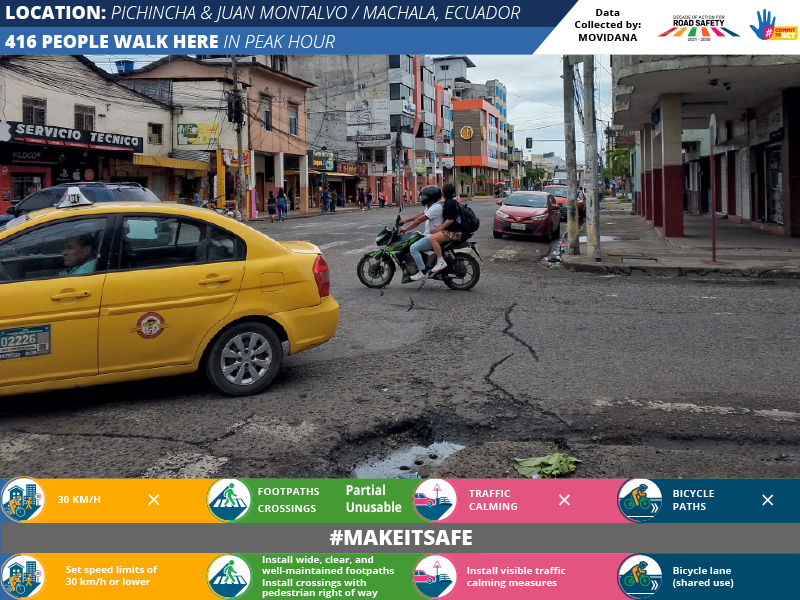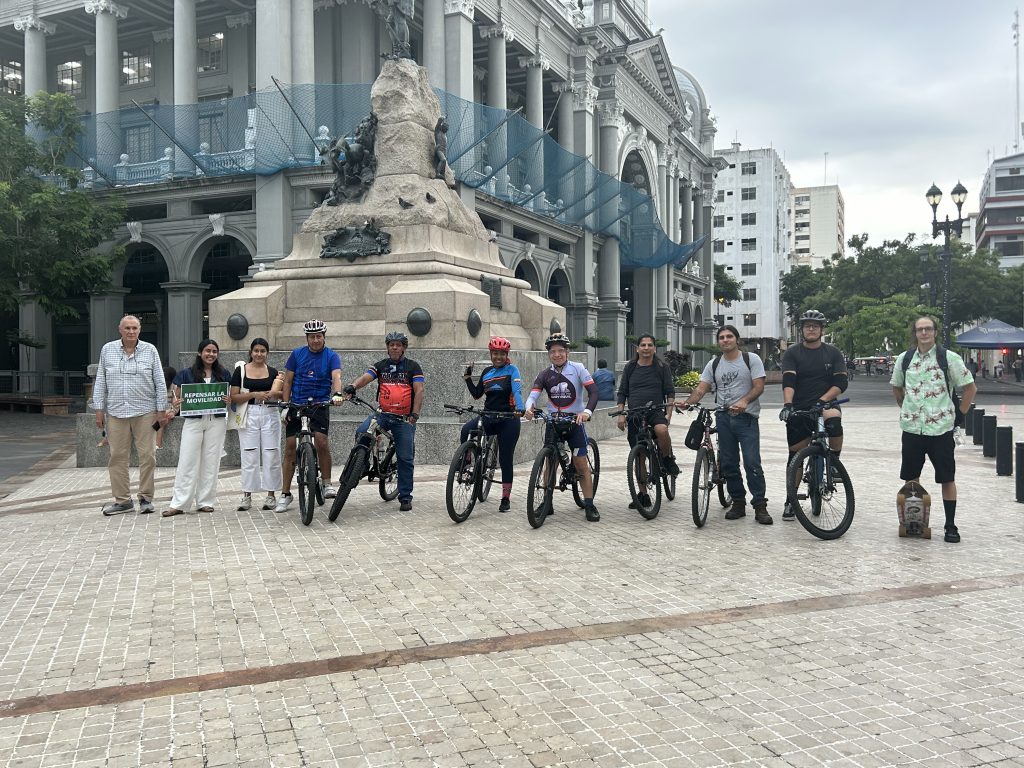
During the 2025 UN Global Road Safety Week in Ecuador, Movidana—a member of the Alliance and the Global Youth Coalition—mobilized youth volunteers across eight cities. These volunteers used Mobility Snapshots to document hazardous conditions for pedestrians and cyclists, gathering vital evidence to drive local advocacy.
To strengthen its Mobility Snapshot advocacy, the NGO applied AI prompts from a toolkit produced by YOURS for the campaign. The AI prompt provides an instruction to turn a real street photo into an “after” image by adding priority interventions and show how the street can become safe and more inclusive. These prompts generated visualizations of streets redesigned with evidence-based interventions, such as pedestrian crossings, traffic calming measures, and protected bike lanes.
To further strengthen its advocacy, Movidana and youth advocates independently gathered additional data by conducting a peak hour efficiency test using the Measurement of Efficiency by Mode of Transport/Medición de Eficiencia por Modo de Transporte (MEMT), a test that measures how effectively different transport modes move people through a given street or intersection during the busiest hour of the day. This helped them provide evidence that cycling was the most efficient mode of transport during peak hours at those intersections. This evidence, combined with personal story telling by community members resonated with others in their communities who joined their voices in calling for change during a town hall event. This sparked constructive dialogue and made them easily get buy-in from mayors, city council members, and transit officials to fast track the adoption of evidence-based interventions such as pedestrian crossings, traffic calming measures, and protected bike lanes.

Movidana also used the opportunity of UNGRSW to present a road safety ordinance it had been working on to municipal leaders. The ordinance is a proposed municipal law based on the Safe System approach that mandates safer infrastructure, speed management programs, data-driven decision-making and inter-institutional coordination to improve road safety and promote inclusive streets for all users, especially pedestrians and cyclists. Four municipalities—El Triunfo, Milagro, Paján and Quito—have already adopted the ordinance. “By adopting this ordinance, municipalities formally commit to embedding road safety into their planning and design processes, creating clear responsibilities and long-term priorities that survive political cycles,” says Pamela Naranjo, Fundación Ciudadana de Movilidad y Seguridad Vial – Movidana.
Movidana continues to lead collaborative advocacy efforts to promote the adoption of the ordinance in other municipalities across Ecuador.
“Our Mobility Snapshots campaign showed poor pedestrians and cyclists’ infrastructure. Instead of framing this as a failure, we decided to use it as an opportunity to help the government reimagine safer, more inclusive streets. This constructive approach has led to positive advocacy results and collective transformation across our cities.”—Pamela Naranjo, Movidana.